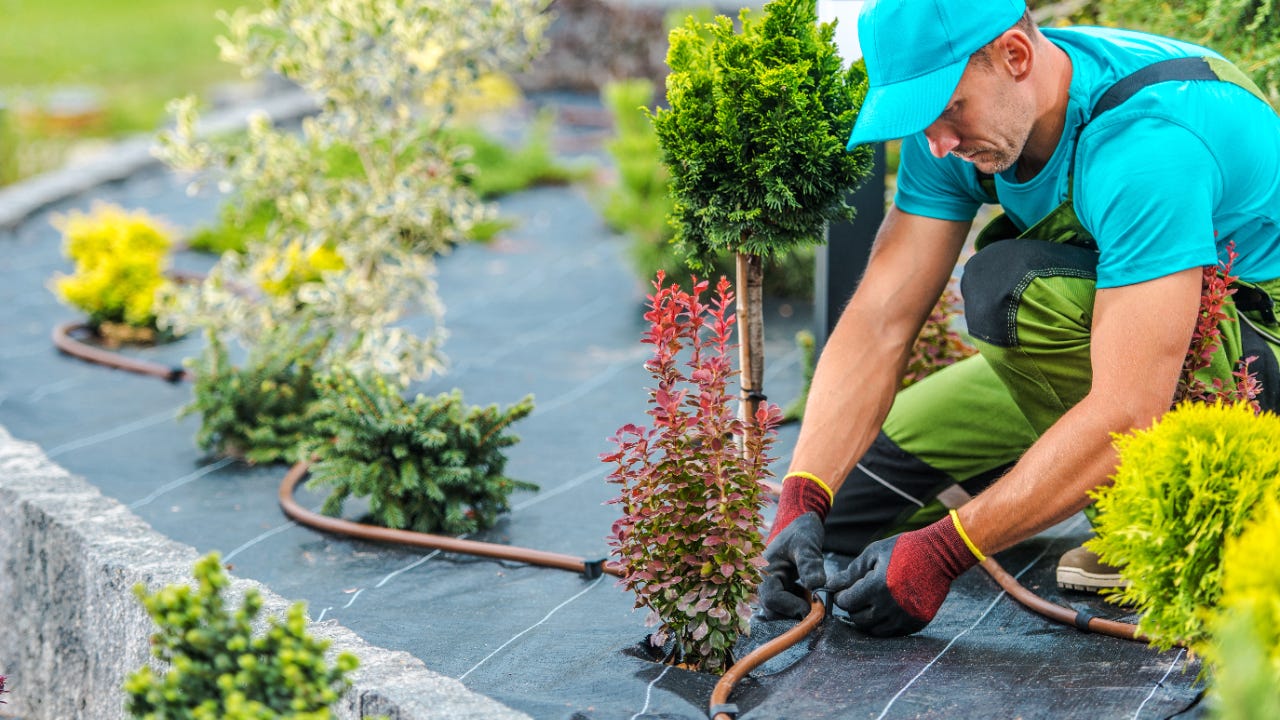A Comprehensive Overview to Designing and Implementing Effective Landscaping Solutions
The art and scientific research of landscaping extend past mere looks; they involve a thoughtful combination of design concepts, environmental stewardship, and sensible application. What techniques can one employ to make certain these landscapes not just flourish however additionally flourish in harmony with their surroundings?

Comprehending Landscape Style Principles
One might question what fundamental elements add to effective landscape style. At its core, effective landscape design rests on several key concepts that assist the arrangement and selection of components within an area. These concepts include unity, rhythm, proportion, and equilibrium, each offering to produce an unified exterior atmosphere.
Unity refers to the cohesive connection among numerous components, ensuring that they collaborate visually and functionally. Balance can be attained through unbalanced or symmetrical plans, allowing the landscape to really feel steady and inviting. Percentage entails recognizing the scale of elements in connection with each other and the surrounding setting, advertising visual harmony and comfort.

Assessing Your Outdoor Area
Prior to executing the concepts of landscape style, a thorough analysis of your outdoor room is important. This initial analysis aids specify the extent of your landscaping project and ensures that your layout lines up with the distinct characteristics of your residential or commercial property. Begin by analyzing the measurements of your area, taking specific dimensions to recognize the readily available location for various aspects such as gardens, patio areas, and paths.
Next, observe the existing features of your landscape, including topography, dirt quality, and water drainage patterns. These aspects considerably influence plant choice and placement. In addition, assess the sunlight direct exposure throughout various areas throughout the day, as this will impact the kinds of plants that flourish in your garden.
Think about the microclimates developed by structures, trees, and other challenges, as they can influence temperature level and moisture degrees. Take note of any type of existing plants or hardscape elements that you desire to maintain or get rid of. This comprehensive assessment lays the foundation for a effective and knowledgeable landscape design remedy, making certain that your design is not just visually pleasing yet lasting and likewise practical for several years to find.
Lasting Landscape Design Techniques
These techniques not only advertise eco-friendly equilibrium but also enhance the visual and practical worth of a landscape. Carrying out reliable irrigation systems, such as drip irrigation, reduces water waste and ensures that plants obtain sufficient dampness (Palm Desert Landscaping).

An additional efficient technique is the critical placement of bushes and trees to provide all-natural windbreaks and shade, therefore reducing power costs (Palm Desert Landscaping). Rain gardens can be integrated right into the landscape design to handle stormwater drainage effectively, filtering contaminants prior to they get in rivers
Choosing the Right Plants
Selecting the right plants for your landscape is vital to attaining both aesthetic appeal and ecological consistency. The process starts with an understanding of your regional environment, dirt conditions, and the certain microenvironments within your landscape. Evaluating factors such as sunshine direct exposure, dampness levels, and existing flora will aid you choose plants that prosper in your special setup.
Take into consideration incorporating native plants, Learn More Here as they are well-adapted to local problems, need much less upkeep, and support neighborhood wild animals. Furthermore, selecting a diverse selection of varieties can boost biodiversity while minimizing the danger of illness Clicking Here and pest episodes. It is necessary to review the development practices, blooming durations, and seasonal shades of prospective plants to develop a natural and dynamic landscape.
Moreover, assume concerning the intended usage of the area; for example, if the area will certainly experience high foot web traffic, choose resilient ground covers. By attentively selecting plants that align with both your visual objectives and ecological needs, you can create a sustainable landscape that not only improves your home but additionally contributes positively to the bordering ecosystem.

Execution and Upkeep Strategies
When the right plants have actually been chosen for your landscape, the focus shifts to efficient execution and recurring maintenance strategies. Effective installation starts with appropriate site preparation, which consists of dirt testing to identify learn this here now nutrient levels and pH, complied with by modifying the soil as required. Thoroughly set up plants according to their development behaviors and light needs, making sure appropriate spacing to advertise healthy growth.
Irrigation is an essential component of implementation. Develop a watering schedule that takes into consideration the details demands of each plant types, readjusting for seasonal changes. Using drip irrigation systems can enhance water performance and lower drainage.
Upkeep approaches have to be executed to ensure the long life and vitality of your landscape. Normal tasks include weeding, mulching, and trimming to manage development and stop disease. Fertilizing needs to be carried out based on soil tests, providing the essential nutrients without over-fertilizing.
Keeping an eye on for pests and illness is crucial; early discovery can protect against considerable damage. Seasonal changes to upkeep regimens, such as winterizing perennials and preparing for springtime growth, will certainly ensure that your landscape remains aesthetically enticing and healthy year-round.
Conclusion
Successful implementation and continuous upkeep better ensure the longevity and vitality of landscapes. By incorporating these components, landscapes can be changed into lovely, useful atmospheres that advertise biodiversity and add favorably to community health.
One might wonder what foundational elements contribute to effective landscape style. At its core, successful landscape design hinges on several vital concepts that assist the arrangement and choice of components within a space.Selecting the right plants for your landscape is important to accomplishing both visual appeal and eco-friendly consistency. It is vital to examine the growth practices, blooming durations, and seasonal colors of possible plants to produce a vibrant and natural landscape.
As soon as the ideal plants have been chosen for your landscape, the focus shifts to efficient execution and ongoing maintenance approaches.